The Fastest Gun Alive

Brief Synopsis
Cast & Crew
Russell Rouse
Glenn Ford
Jeanne Crain
Broderick Crawford
Russ Tamblyn
Allyn Joslyn
Film Details
Technical Specs

Synopsis
Driven to prove that he is the "fastest gun alive," outlaw Vinnie Harold rides to Silver Rapids to challenge Clint Fallon, who is rumored to have the fastest draw. After Fallon dies in the match, news of Harold's lightning speed spreads to nearby Cross Creek. There, townsmen Eric Doolittle, Harvey Maxwell, Lou Glover and others gossip about the Silver Rapids duel while peaceful shopkeeper George Temple becomes increasingly aggravated by their chatter. One evening at a town dance, George is again angered when Harvey, Fred Fenwick, Doc Jennings and others drunkenly boast about working with their hands, insinuating that George is a lesser man for being a shopkeeper. George's pregnant wife Dora, who senses his growing resentment, warns him not to spoil their life in Cross Creek and then alludes to the many times that they have been forced to leave other towns because of George's behavior. When Kevin McGovern, an eye witness to the Silver Rapid's duel, holds court at the store to recount the tale, a frustrated George orders the men from the store, snaps at customer Rose Tibbs and finally leaves for the saloon where the normally temperate man orders a drink, shocking the townsmen as they continue debating who is the fastest gun in history. When Harvey chides him, George suddenly turns on the men, criticizing them for their inexpertness in handling a gun. George then gives several of the men a lesson in how to wear a gun for an easy draw and quick kill and announces that he, in fact, is the "fastest gun alive." When the townsmen refuse to give George a gun so he can prove his skill, George retrieves his gun, hidden in the store, while Dora reminds him that he promised to throw the weapon away long ago. Out on the main street, George asks two men to throw silver dollars into the air simultaneously so he can shoot them. When both coins land on the ground with perfect holes through their centers, everyone is aghast. Feeling he needs to give Harvey further proof, George asks him drop his mug full of beer at will as a target. When George easily shatters the glass before it hits the ground, everyone agrees that George is the fastest gun. Meanwhile in Yellow Fork, Harold and his cohorts, Taylor Swope and Dink Wells, kill sheriff Bill Toledo's brother while robbing the town bank. Determined to avenge his brother's death, Toledo and his posse follow the fleeing robbers. Back in Cross Creek, George packs his bags while an unwilling Dora tells him to settle the old score that keeps them running. Soon after, as Harold, Swope and Wells approach Cross Creek to steal fresh horses, George enters the church with his gun during Sunday morning service and hands the weapon to the reverend, promising never to use it again. He explains to the congregation that when news of his skill spreads, vicious gunslingers from far and wide will come to Cross Creek to compete and thus ruin the town. When the Reverend suggests that the town can keep a secret, George asks how many have already written letters about yesterday's event. After half the congregation raises their hand, George asks Dora to leave with him and she agrees, but Lou argues that they cannot afford to lose George, a generous, law-abiding citizen. The entire congregation then swears one by one to keep the secret, but Dora reminds George that he has not told them the entire truth. Meanwhile, when Harold, Swope and Wells find young Bobby Tibbs playing in the saloon and tell him that Harold is the fastest gun, the boy pulls out George's silver dollars from his pocket and recounts the previous day's event. While the whole town continues to take their vows at church, Brian Tibbs finds his son with the men in the saloon, where Harold demands to know the name of the gunslinger Bobby praises. When Brian explains he took an oath of secrecy, Swope threatens him with a gun but Harold shoots the gun from his hand. Alerted by the gunshot, the townspeople rush to the steps of the church, where Swope tells them his onerous and unpredictable boss wants to meet the so-called fastest gun. When the townspeople ask him to defend the town, George refuses. Back at the saloon, an obsessed Harold loses patience and orders Swope to tell the townspeople he will burn down Cross Creek unless they name the man in five minutes. After hearing the warning, the townspeople watch as Wells pours kerosine on their homes and businesses. With all of their livelihoods at stake, Harvey and Lou suggest George should fight. A fearful George explains that he is the son of Kelby, a famous sheriff and skilled gunman who taught him everything he knew. Although George became even better than his father, he has never drawn his gun against another man. After his father was killed, George chose to flee instead of fight. Prompted by Wells' lit torch, Lou yells to the outlaws that their man will soon come out and then takes the gun from the podium himself, knowing that to draw against the killer will mean his certain death. George stops him and takes his gun. Fearing the approaching posse, Wells flees on horseback while Swope attempts to take his share of the robbery, but Harold challenges him to draw his gun and Swope leaves empty-handed. Harold then walks down the main street and challenges George. Later, Toledo rides into town with both Swope and Wells' dead bodies and watches as the townspeople cover two graves. They tell Toledo that although George Kelby was the fastest gun alive, he died in the draw. Soon after, George, still very much alive, tells his wife that he buried his gun in the empty coffin as they walk back into town to continue their life in Cross Creek, where their secret is safe.

Director
Russell Rouse
Cast
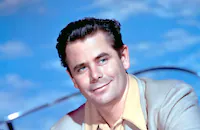
Glenn Ford
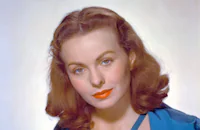
Jeanne Crain
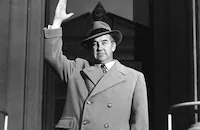
Broderick Crawford

Russ Tamblyn
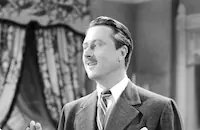
Allyn Joslyn

Leif Erickson
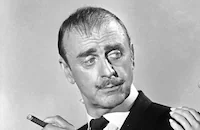
John Dehner
Noah Beery [jr.]

J. M. Kerrigan

Rhys Williams
Virginia Gregg
Chubby Johnson

John Doucette
William "bill" Phillips
Chris Olsen
Paul Birch
Florenz Ames
Joseph Sweeney

Addison Richards
Luana Lee
Don Burnett
Janet Lake
Owen Mcgiveney
Richard Cutting
Michael Dugan

Louis Jean Heydt
John Dierkes
Dub Taylor
Walter Coy
Betty Farrington
Mitchell Lewis
Jeane Wood
Carl Pitti
Wheaton Chambers
John Mckee
John Cliff

Glenn Strange
Earle Hodgins
Bud Osborne
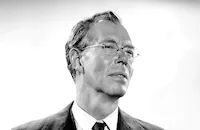
Walter Baldwin
Vivi Janiss
G. Pat Collins
Jeri Weil
Eddy Grove
George Selk
Harvey Dunn
Harry Cody
Dayton Osmond
Susan Odin
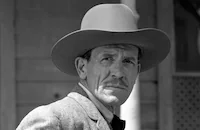
Kenneth Macdonald
Ray Saunders
Audrey Saunders
Monty Montague
Ray Bennett
John Halloran
Florence Macafee
Crew
Sid Bowen
Grace Dubray
Tom Edwards
George J. Folsey
Joel Freeman
Cedric Gibbons
Frank D. Gilroy
Clarence Greene
Harry V. Knapp
Fred Maclean
Tom Mccarthy
Dr. Wesley C. Miller
Joe Nayfack
Scott Perry
André Previn
Merrill Pye
Alex Romero
Carl Roup
Russell Rouse
Charles Scheid
William Tuttle
Bobbie Walthour Jr.
Ferris Webster
Edwin B. Willis

Photo Collections
Videos
Trailer
Hosted Intro



Film Details
Technical Specs

Articles
The Fastest Gun Alive
Ford plays a peaceful storekeeper who tries to keep his prodigious skill with a gun under wraps. But once while drunk, he carelessly reveals his sharpshooter talent to the public, and word soon travels to Vinnie Harold (Broderick Crawford), an egotistical bully who thinks he's the fastest draw in the West. Crawford comes gunning for a showdown, and all is settled in a twist ending.
Director Russell Rouse and producer Clarence Greene have become something of a cult unto themselves, known for a series of offbeat films throughout the 1950s. The two first worked together as co-writers and producers of an odd little romantic comedy, The Town Went Wild (1944), about two feuding men who discover their sons have been switched at birth (and one is about to marry his own sister!). Rouse made his directorial debut with The Well (1951), a Greene-produced stark study in racial tension and mob violence. They co-created a number of quirky, low-budget hits over the next decade and had their most high-profile pictures in the 1960s with the trashy adaptation of brothel-keeper Polly Adler's memoirs, A House Is Not a Home (1964), and the camp classic, The Oscar (1966), an all-star "inside-Hollywood" melodrama. The two were also the co-writers of the film noir classic D.O.A. (1950).
The Fastest Gun Alive features a number of supporting players better known for other work. John Dehner, John Doucette, Noah Beery, Jr. (nephew of Oscar®-winner Wallace Beery), and Leif Erickson (one-time husband of Frances Farmer and star of TV's The High Chaparral) are all veterans of numerous Westerns. Russ Tamblyn, who performs an oddly out-of-place dance number in this film, is more familiar to fans of musicals from such movies as Seven Brides for Seven Brothers (1954) and West Side Story (1961). Jeanne Crain, who plays Ford's wife, received a Best Actress Academy Award® nomination as a black girl passing for white in Pinky (1949), and Crawford was awarded Best Actor for his role as the Huey Long-inspired demagogue Willie Stark in All the King's Men (1949).
Viewers may also recognize the name of co-writer Frank D. Gilroy. This was his first feature-film screenplay, written in the middle of a long stretch in television, including writing stints on such Western series as Wanted: Dead or Alive (the show that gave Steve McQueen his first big break) and The Rifleman. Gilroy later wrote for the stage, too, and two of his plays were adapted to film as The Subject Was Roses (1968), an early Martin Sheen role, and The Only Game in Town (1970), the only pairing of Warren Beatty and Elizabeth Taylor.
Director: Russell Rouse
Producer: Clarence Greene
Screenplay: Frank D. Gilroy and Russell Rouse, from Gilroy's story "The Last Notch"
Cinematography: George J. Folsey
Editing: Harry V. Knapp, Ferris Webster
Art Direction: Merrill Pye, Cedric Gibbons
Original Music: Andre Previn
Cast: Glenn Ford (George Temple), Jeanne Crain (Dora Temple), Broderick Crawford (Vinnie Harold), Russ Tamblyn (Eric Doolittle), Allyn Joslyn (Harvey Maxwell).
BW-90m. Letterboxed. Closed captioning.
by Rob Nixon

The Fastest Gun Alive
Quotes
Trivia
Notes
The working title for the film was The Last Notch, the same title as the hour-long teleplay on which it was based. The television version starred Jeff Morrow and Richard Jaeckel and was directed by Alex Segal. The June 20, 1956 Hollywood Reporter review of the film notes that it was released in widescreen, but did not specify a format. Modern sources add Kermit Maynard and Ray Jones to the cast.

Miscellaneous Notes
Released in United States Summer July 1956
Released in United States Summer July 1956














